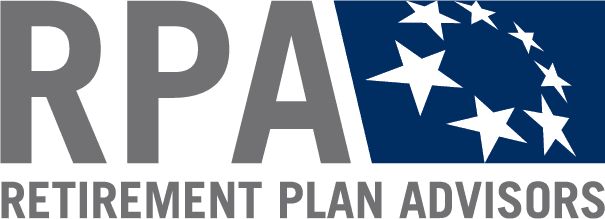Key retirement provisions to understand:
In the final days of 2022, Congress passed a new set of retirement rules designed to facilitate contributions to retirement plans and access to those funds earmarked for retirement. The law is called SECURE 2.0, and it is a follow-up to the Setting Every Community Up for Retirement Enhancement (SECURE) Act passed in 2019. The sweeping legislation has dozens of significant provisions; here are the major provisions of the new law.
New Distribution Rules
Required minimum distribution (RMD) age will rise to 73 years in 2023 – mandatory plan provision.
By far one of the most critical changes was increasing the age at which retirement account owners must begin taking RMDs. Further, starting in 2033, RMDs may begin at age 75. If you have already turned 72, you must continue taking distributions. However, if you are turning 72 this year and have already scheduled your withdrawal, you and your financial professional may want to revisit your approach.1
Elimination of the “first-day-of-the-month” requirement for 457(b) plans in 2023 – optional plan provision.
457(b) plan participants no longer must make a deferral election in the month prior to the compensation being paid. Deferrals can start effective the next pay period.2
Roth Catch-Up in 2024 – mandatory plan provision.
If a participant’s wages subject to FICA in the previous year paid by the employer sponsoring the plan totaled more than $145,000, the participant may only contribute the Age 50+ Catch-Up as a Roth contribution.3
Access to funds – optional plan provision.
Some plan participants can use retirement funds in an emergency without penalty or fees. For example, in 2024 and onward, an employee can take up to $1,000 from a retirement account for personal or family emergencies. Other emergency provisions exist for terminal illnesses and survivors of domestic abuse.4
Reduced penalty – mandatory plan provision.
Starting in 2023, if you miss an RMD for some reason, the penalty tax drops to 25% from 50%. If you promptly fix the mistake, the penalty may drop to 10%.5
New Accumulation Rules
Catch-up contributions – optional plan provision.
From January 1, 2025, investors aged 60 through 63 years can make annual catch-up contributions of up to $10,000 to workplace retirement plans. The catch-up amount for people aged 50 and older in 2023 is $7,500. However, a mandatory provision applies certain stipulations to individuals with annual earnings more than $145,000.6
Student loan matching – optional plan provision.
In 2024, companies can match employee student loan payments with retirement contributions. The rule change offers workers an extra incentive to save for retirement while paying off student loans.7
Revised Roth Rules
529 to a Roth – optional plan provision.
Starting in 2024, pending certain conditions, individuals can roll a 529 education savings plan into a Roth individual retirement account (IRA). Therefore, if your child receives a scholarship, goes to a less expensive school, or does not go to school, the money can get repositioned into a retirement account. However, rollovers are subject to the annual Roth IRA contribution limit. Roth IRA distributions must meet a five-year holding requirement and occur after age 59½ to qualify for the tax-free and penalty-free withdrawal of earnings. Tax-free and penalty-free withdrawals are also allowed under certain other circumstances, such as the owner’s death. The original Roth IRA owner is not required to take minimum annual withdrawals.8
SIMPLE and SEP – optional plan provision.
In 2023 and onward, employers can make Roth contributions to savings incentive match plans for employees (SIMPLE) or a simplified employee pension (SEP).9
Roth 401(k)s and Roth 403(b)s – mandatory plan provision.
The new legislation aligns the rules for Roth 401(k)s and Roth 401(b)s with Roth IRA rules. From 2024 forward, the legislation no longer requires minimum distributions from Roth accounts in employer retirement plans.10
More Highlights
Support for small businesses – optional plan provision.
In 2023, the new law will increase the credit to help with the administrative costs of setting up a retirement plan. The credit increases to 100% from 50% for businesses with less than 50 employees. By boosting the credit, lawmakers hope to remove one of the most significant barriers for small businesses offering a workplace plan.11
Qualified charitable donations (QCDs) – optional plan provision.
In 2023 and beyond, QCDs will adjust for inflation. The limit applies on an individual basis; therefore, for a married couple, each person who is 70½ years and older can make a QCD as long as it remains under the limit.12
Consult Your Financial Advisor
The change in retirement rules does not mean adjusting your current strategy is appropriate. Each of your retirement assets plays a specific role in your overall financial strategy, so a change to one may
require changes to another.
Moreover, retirement rules can change without notice, and there is no guarantee that the treatment of specific rules will remain the same. This article intends to give you a broad overview of SECURE 2.0. It is not intended as a substitute for real-life advice. If changes are appropriate, your trusted financial professional can outline an approach and work with your tax and legal professionals, if applicable.
Citations:
1. Fidelity.com, December 23, 2022
2. Ice Miller, January 17, 2023
3. Baker Law, January 4, 2023
4. CNBC.com, December 22, 2022
5. Fidelity.com, December 22, 2022
6. Fidelity.com, December 22, 2022
7. PlanSponsor.com, December 27, 2022
8. CNBC.com, December 23, 2022
9. Forbes.com, January 5, 2023
10. Forbes.com, January 5, 2023
11. Paychex.com, December 30, 2022
12. FidelityCharitable.org, December 29, 2022
The content is developed from sources believed to be providing accurate information. The information in this material is not intended as tax or legal advice. It may not be used for the purpose of avoiding any federal tax penalties. Please consult legal or tax professionals for specific information regarding your individual situation. This material was developed and produced by FMG Suite to provide information on a topic that may be of interest. FMG, LLC, is not affiliated with the named broker-dealer, state- or SEC-registered investment advisory firm. The opinions expressed and material provided are for general information, and should not be considered a solicitation for the purchase or sale of any security. Copyright FMG Suite.

